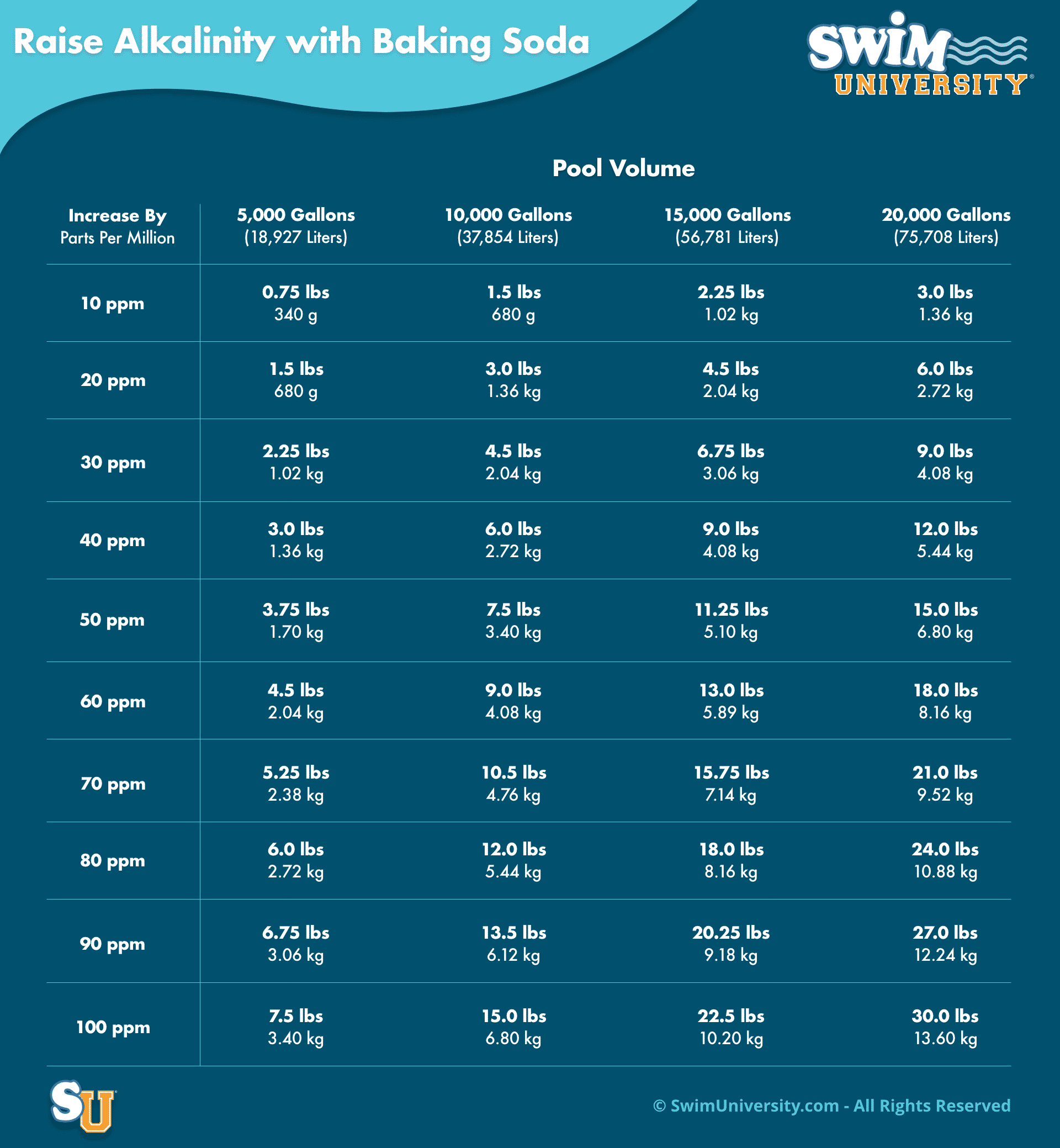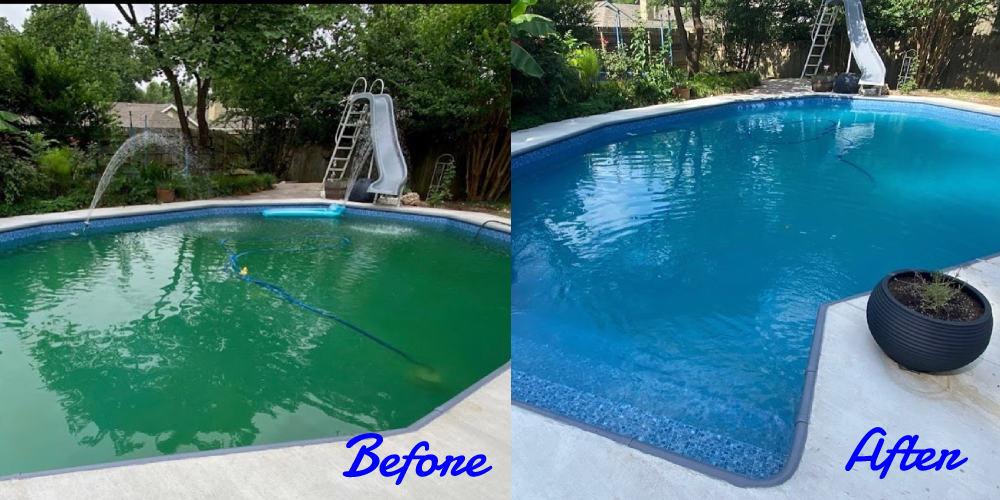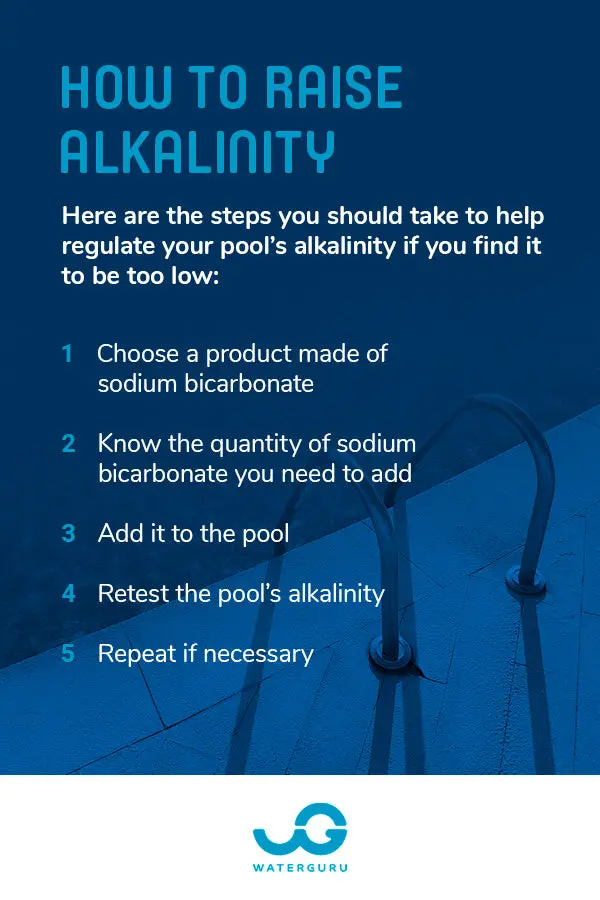To increase alkalinity in your pool, add baking soda or soda ash in small amounts until the desired levels are reached.

Credit: www.swimuniversity.com
Understanding Pool Alkalinity
Increase alkalinity in your pool by understanding pool alkalinity. Maintaining proper pool alkalinity levels is essential for balanced water chemistry and a clean swimming experience. Follow these steps to ensure your pool’s alkalinity is at the optimal range for optimal pool health.
Importance Of Alkalinity In Pools
Optimal Alkalinity Levels

Credit: www.docdeanspools.com
Testing Pool Alkalinity
Testing the alkalinity of your pool is crucial for maintaining a healthy and balanced pool environment. Properly testing and interpreting the results can provide valuable insights into the state of your pool’s water and help prevent potential issues that may arise from imbalanced alkalinities.
Using Test Strips Or Kits
Test strips and kits are commonly used to measure the alkalinity of pool water. These are readily available at pool supply stores and are relatively inexpensive. To use test strips, simply dip them into the pool water and compare the color change to the provided chart. Test kits often come with reagents to titrate the water sample, providing a more accurate reading of alkalinity levels.
Interpreting Test Results
Once you have conducted the test using strips or a kit, it’s important to interpret the results accurately. A proper understanding of the alkalinity levels will guide you in making the necessary adjustments to ensure optimal water quality. Ideally, the recommended range for pool alkalinity is 100-150 ppm (parts per million). If the results fall outside of this range, appropriate measures can be taken to rectify the situation and bring the alkalinity levels back into balance.
Methods To Increase Alkalinity
Methods to Increase Alkalinity in your pool are essential for maintaining water balance and ensuring pool health. Keeping the alkalinity level within the recommended range helps prevent pH fluctuations and ensures the effectiveness of other pool chemicals.
Adding Baking Soda
Utilize baking soda, a common household item, to increase alkalinity in your pool. The sodium bicarbonate in baking soda acts as a buffer, helping stabilize pH levels without significantly impacting them.
Using Alkalinity Increasers
Alkalinity increasers are specifically designed chemicals that swiftly elevate the alkalinity levels in the pool. These products come in various forms like powders or liquids and are simple to apply, making them a convenient solution.
Methods To Decrease Alkalinity
Reducing alkalinity in your pool is essential for maintaining safe and balanced water conditions. High alkalinity can lead to cloudy water, scale buildup, and pH fluctuations. Fortunately, there are several effective methods to decrease alkalinity and ensure your pool remains clean and inviting. In this guide, we will explore two popular methods: dilution with fresh water and using pH reducers.
Dilution With Fresh Water
To decrease alkalinity in your pool, one simple method is to dilute the water with fresh water. This process involves partially draining the pool and replacing it with fresh water. Here’s a step-by-step guide on how to perform this method:
- Begin by testing the alkalinity levels in your pool using a reliable testing kit.
- If the alkalinity is above the recommended range (80-120 ppm), you can proceed with dilution.
- Prepare fresh water by using a garden hose or any clean water source. Make sure the water is free from contaminants or chemicals.
- Carefully drain a portion of the pool water to create space for the fresh water.
- Slowly add fresh water to the pool, ensuring it mixes well with the existing water. This process allows for the dilution of alkalinity.
- After adding fresh water, retest the alkalinity levels to ensure they are within the desired range. If needed, repeat the process until the alkalinity is balanced.
Using Ph Reducers
Another effective way to reduce alkalinity is by using pH reducers. These chemical compounds work by neutralizing the pool water’s alkaline properties. Follow these steps to utilize pH reducers:
- Before proceeding, check the pH level in your pool. If it is outside the recommended range (7.4-7.6), adjust it using pH increasers or decreasers.
- Choose a suitable pH reducer product available in the market. Ensure the product is specifically designed for decreasing alkalinity.
- Follow the manufacturer’s instructions and guidelines for dosing the pH reducer. Make sure you wear appropriate protective equipment, such as gloves and goggles, during this process.
- Add the required amount of pH reducer slowly into the pool water, distributing it evenly across the surface.
- Allow the pH reducer to circulate and mix thoroughly with the pool water. Follow the recommended waiting time mentioned on the product packaging.
- After the waiting time, retest the alkalinity levels. If necessary, repeat the process until the alkalinity reaches the desired range.
By following these methods, you can effectively decrease alkalinity in your pool and maintain optimal water conditions. Remember, it is important to regularly monitor your pool’s alkalinity and take necessary actions to ensure a safe and refreshing swimming experience.
Maintaining Alkalinity Balance
Ensuring the proper alkalinity balance in your pool is crucial for water quality and swimmer comfort.
Regular Testing And Adjustments
Frequent testing of alkalinity levels is key to maintaining balance in the pool.
- Use a reliable test kit to monitor alkalinity regularly.
- If levels are too low, add an alkalinity increaser as needed.
- Ensure alkalinity is within the recommended range for optimal results.
Preventing Alkalinity Fluctuations
Stabilize alkalinity to prevent rapid fluctuations, maintaining a consistent pH level.
- Avoid adding acidic chemicals directly to the pool; use a pre-dilution method.
- Monitor other factors like chlorine levels that can impact alkalinity.
- Consider using a pool cover to reduce the effects of sunlight on water chemistry.

Credit: theelitepool.com
Factors Affecting Pool Alkalinity
Factors affecting pool alkalinity play a crucial role in maintaining the water balance and overall health of the pool. Understanding these factors is essential for effectively managing the alkalinity levels and ensuring a safe and enjoyable swimming experience.
Impact Of Ph Levels
A significant factor influencing pool alkalinity is the pH level of the water. When the pH level deviates from the ideal range of 7.2 to 7.8, it directly impacts the alkalinity. High pH levels can lead to increased alkalinity, while low pH levels can result in decreased alkalinity.
Influence Of Pool Usage
The frequency and intensity of pool usage can also affect alkalinity. Heavy usage, such as hosting pool parties or regular swimming activities, can lead to fluctuations in alkalinity levels due to added contaminants from sunscreen, sweat, and other body oils. On the other hand, pools with minimal usage may experience stabilized alkalinity levels.
Professional Help And Consultation
Seeking professional help and consultation in maintaining the alkalinity of your pool can be crucial for its long-term health. Professional experts have the knowledge and experience needed to provide tailored solutions for your specific pool requirements. Let’s explore when it is appropriate to seek expert advice and the professional testing and balancing services available.
When To Seek Expert Advice
If you notice persistent issues in maintaining the alkalinity levels of your pool, it’s advisable to seek professional assistance. Expert advice may be necessary when standard remedies fail to address the problem, or if the pool’s alkalinity level consistently fluctuates despite your efforts to maintain it.
Professional Testing And Balancing Services
Professional testing and balancing services offer comprehensive assessments of your pool’s alkalinity levels. This typically involves in-depth testing to identify the root cause of any imbalance, followed by expert recommendations and solutions. Trained professionals utilize advanced equipment and techniques to accurately diagnose any potential issues and implement effective measures to restore proper pool alkalinity.
Conclusion
Incorporating these steps can help you maintain the optimal alkalinity levels in your pool. Remember to regularly test and adjust the pH levels to ensure a safe and enjoyable swimming experience. With a balanced pool, you can relax and enjoy the benefits of a clean and refreshing swim all summer long.





